Breed-related disease: Himalayan
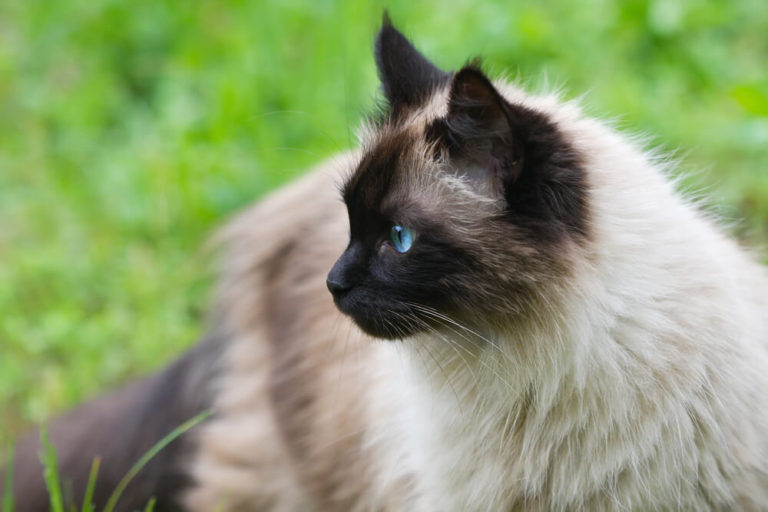
John K. Rosembert The Himalayan cat is a medium-sized cat very similar in appearance to the Persian cat but distinguished by the points on the cats’ extremities (the facial mask, feet, ears, and tail) which results in a Persian-type cat with the coloring and deep blue eyes of the Siamese-patterned cat. The ideal Himalayan is a strong cat with excellent boning and musculature, a well-balanced cat, giving the impression of robust power. As with their Persian cousins, the Himalayan cat has two facial variations : traditional / doll-faced, or peke-faced (named after the Pekingese dog with squashed-looking features). The Himalayans make great indoor pets. They possess the best characteristics from the Siamese and the Persian. Their activity levels lay between that of the Siamese and Persian, so they’re equally happy to play as they are to relax, making them great family pets They are loyal and affectionate cats who require lots of attention and love but tend to play favorites among their owners. They are very social, sweet and intelligent, and have been known to be quite talkative. Here we bring you the most common Himalayan Cat Diseases & Conditions. Polycystic kidney disease. PKD is a condition that is inherited and symptoms can start to show at a young age. Polycystic Kidney Disease causes cysts of fluid to form in the kidneys, obstructing them from functioning properly. It can cause chronic renal failure if not detected . Look for symptoms like poor appetite, vomiting, drinking excessively, frequent urination, lethargy and depression. Breathing issues. Peke-faced cats have a compacted snout and airway and as a result, it may suffer shortness of breath or noisy breathing. Cherry eye . is a condition affecting the eye, causing the third eyelid to well and cause irritation It generally appears as a red mass (hence the name cherry) on the corner of the cat’s eye. It is treated with surgery. Progressive retinal atrophy. Refers to a family of eye conditions which cause the retina’s gradual deterioration. Night vision is lost in the early stages of the disease, and day vision is lost as the disease progresses. Many cats adapt to the loss of vision well, as long as their environment stays the same. Entropion. It is a condition that can occur in Persians and causes the eyelid to roll inwards, which can lead to irritation or injury of the eyeball. Signs include rubbing or scratching around the eye area. It can be treated surgically if necessary. Primary seborrhea. is a skin condition in which the skin becomes greasy, scaly and smelly due to the overproduction of skin cells. Sources: http://www.vetstreet.com/cats/himalayan#1_ugw20zmq https://bowwowinsurance.com.au/cats/cat-breeds/himalayan-cat/ Photo credit: https://www.shutterstock.com/ search / himalayan + cat https://www.wwwallaboutcats.com/best-food-for-himalayan-cats
Breed-related disease: Siberian Husky
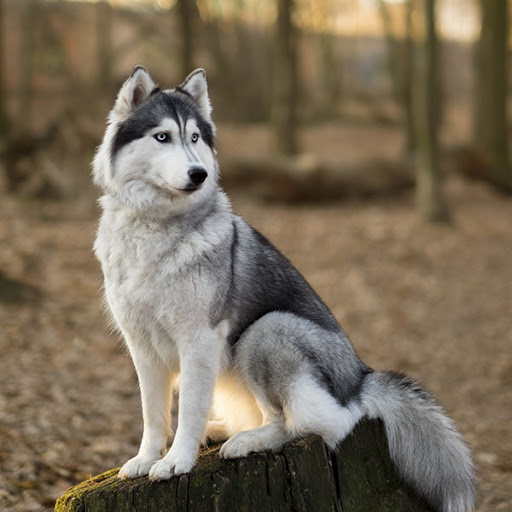
John K. Rosembert The Siberian Husky is a medium-sized working dog breed with a thick coat that comes in a multitude of colors and markings. Their blue or multi-colored eyes and striking facial masks only add to the appeal of this breed, which originated in Siberia. It is a breed that combines power, speed, and endurance. They are moderately compact, slightly longer than they are tall, and of definite Northern heritage. They are quick and light on their feet, with a smooth and effortless stride exhibiting both good reach and drive. Their expression is often keen but friendly, interested, and sometimes even mischievous. The Siberian Husky breed has an average lifespan of 12 to 14 years and is an ideal pet choice for lots of different people, including families. However, purebred Huskies do have several canine health problems that prospective owners should consider. As with all animals, it’s important to be aware of the common health concerns that plague Siberian Huskies since many of the problems can be expensive and time-consuming to treat. If you’re thinking of adopting a Husky, learn about their common health problems here so you can make an informed decision about the requirements of the dog breed. Here’s a list of the most common health problems for Siberian Husky: Cataracts: which is cloudiness in the lens of the eye leading to blurred vision, which ranges from partial to complete opacity. When the lens becomes cloudy it can prevent light from passing to the retina, contributing to vision loss. It is one of the most common health problems for Siberian Huskies, affecting about 10% of the breed, it will typically develop within 6 to 12 months of a Husky’s life and can, unfortunately, lead to blindness later on. Because of this, it’s important to have your dog’s eyes checked by a vet regularly. Progressive Retinal Atrophy (PRA): is also sometimes known as progressive rod and cone degeneration (PRCD), is a group of degenerative eye disorders in dogs that lead to blindness in both eyes.It is another common eye problem for Siberian Huskies. With PRA, the retina of a dog’s eye starts to deteriorate. Both cataracts and progressive retinal atrophy are considered to be costly health issues, so early detection is vital. Corneal Dystrophy: Corneal dystrophy is a hereditary disease that affects the cornea of Siberian Huskies. If your Husky is suffering from this condition, you will notice small white dots in his cornea. Huskies with this health issue may experience opaqueness or at times, hazy vision. Sadly, there is currently no known treatment for correcting corneal dystrophy. Uveodermatologic Syndrome: Uveodermatologic syndrome is another common eye disease with the Siberian Husky, although this condition also affects the skin as well as the nervous system. It’s important to keep in mind that the skin reaction to this syndrome is only cosmetic. However, its effects on the eyes can cause blindness in severe cases. Uveodermatologic syndrome is difficult to detect, but the first signs will usually be in a Husky’s eyes. Many dogs may show redness in their eyes as well as impaired vision. Hip Dysplasia: is an abnormal formation of the hip socket that, in its more severe form, can eventually cause crippling lameness and painful arthritis of the joints, it is one of the most concerning health issues for any dog owner to worry about, it is very common with Siberian Huskies. Follicular Dysplasia: is a genetic disease causing alopecia, or hair loss. It is caused by hair follicles that are malfunctioning due to structural abnormality. This condition affects Huskies between 3 and 4 months of age and can result in abnormal hair growth, canine hair loss, or patchy, infectious skin. Siberian Huskies have a high risk of follicular dysplasia and unfortunately, there is currently no treatment. To better manage the disease, some vets will recommend that pet owners use specific shampoos, antimicrobials, and topical applications as needed. Zinc Deficiency: Just like humans, dogs need a sufficient amount of zinc in their bodies in order to remain at optimum health. When Siberian Huskies experience a zinc deficiency, they might suffer from hair loss on their feet, elbows, or eye, chin, and lip areas. Zinc supplements may help alleviate symptoms, but a vet should be consulted before adding any to your pet’s diet to avoid an overdose. Hypothyroidism: is a common health problem in Huskies that relates to an abnormal amount of secretion of the thyroid gland. If your Siberian Husky has this condition, you may notice that he’s gained weight, although he is eating less than normal. You might also notice fur loss or even bald spots located on his coat. Other symptoms include lethargy and increased sleep. Sources: https://dogtime.com/dog-breeds/siberian-husky#/slide/1 https://canna-pet.com/siberian-husky-health-problems-issues/ Photo credit: http://www.opsopet.com/product/siberian-husky-dog/ https://www.clicktreatplay.com/know-dog-siberian-husky/
Breed-related disease: Siamese cat
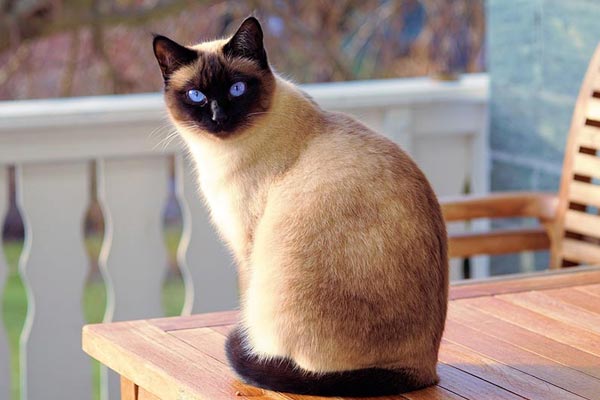
John K. Rosembert Siamese, popular short-haired breed of domestic cat originally from Thailand, a country whose official name was Siam until 1939. The Siamese is a lithe long-bodied cat with slim legs and a long slim tail. It has a long wedge-shaped head and blue eyes. They have a distinctive “pointed” coat: a light-colored background with darker points on the ears, mask, legs, and tail in the seal, lilac, chocolate and blue. Other point colors include tabby, red, cream , silver and smoke. The Siamese was first exported from Siam to the United States in 1878 and the United Kingdom in 1884. By 1902 the first cat fanciers club devoted to the Siamese cat had been established in the United Kingdom, and by 1906 the Cat Fanciers’ Association had officially recognized the breed. The Siamese come in two types: “show and traditional”. The show Siamese is a work of modern art, all lines, and angles. He has a tubular body on long legs, a wedge-shaped head with large, triangular ears, and a long tail. The traditional Siamese, also known as the apple-headed Siamese, has a rounded head and chunky body. Both types have bright blue eyes that demand worship due to all cats. Whether you choose a show Siamese or a traditional Siamese, they should share the same wonderful personality. They are endlessly curious but inclined to be smart and demanding. This is a cat who has a passion for his people and will involve himself in everything they are doing. Here are some of the common health issues to watch out for in Siamese Progressive retinal atrophy (PRA): Siamese cats are prone to this genetic eye problem which leads to progressive blindness. For diagnosis and to help your cat lead as normal a life as possible with PRA, input is needed from a veterinary ophthalmologist. Systemic amyloidosis: This is where protein builds up in various organs, stopping them from working properly, typically resulting in severe liver damage and / or kidney failure. This is a fatal disease. Mediastinal lymphoma: This form of cancer causes a buildup of fluid around the lungs. From chemo and steroids through to possible surgery, a vet should be able to advise you on the best way forward. Asthma: Siamese are one of the cat breeds most susceptible to this disease of the airway. Treatment options include anti-inflammatory drugs and bronchodilator therapy. Hip dysplasia: Siamese can be predisposed to this form of lameness of the hind leg, caused by abnormal development of the hip joint. It can’t be cured-but it can often be controlled. Vestibular Disease: Some Siamese cats develop vestibular disease. This is a genetic problem having to do with the inner ear, specifically the nerves serving the ear. Cats with vestibular disease will display symptoms consistent with a loss of balance, such as head tilting. Sources: https://www.britannica.com/animal/Siamese-breed-of-cat https://www.everypaw.com/all-things-pet/siamese-cat-breed-info-and-health-advice Photo credit: http://www.vetstreet.com/cats/siamese#0_ryz4d6cf https://www.catster.com/topic/offbeat
Breed-related disease: Chihuahua
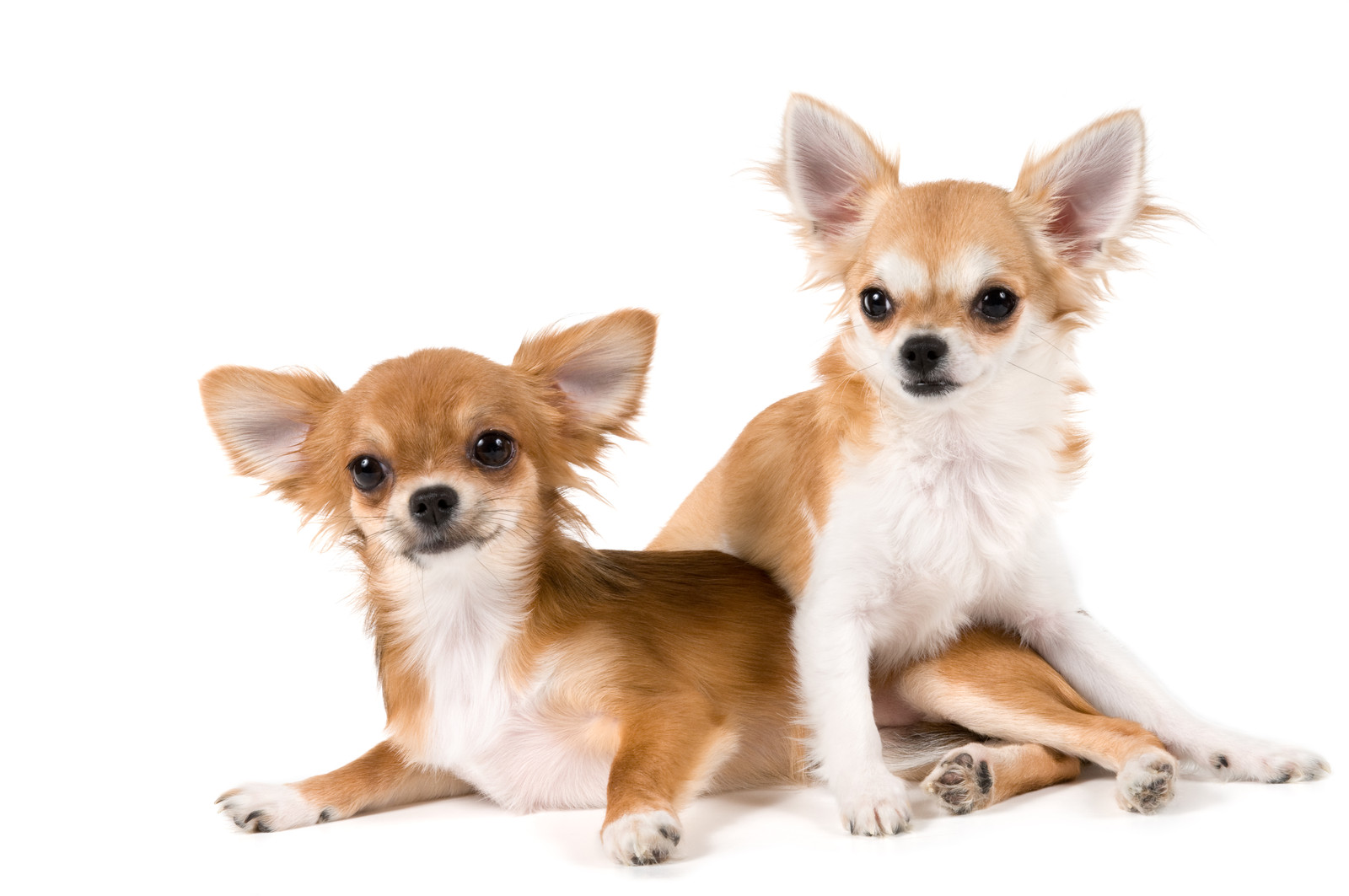
John K. Rosembert The Chihuahuas are the world’s smallest dog breed, and they’re named after the Mexican state of Chihuahua. There are two varieties of Chihuahua recognized by t he AKC– the Smooth Coat (short-haired) and the Long Coat (long-haired) . Both the Smooth and the Long Coats have their special attractions and are equally easy to keep clean and well-groomed. It is a good companion dog. Courageous, extremely lively, proud and adventurous, they enjoy affection. Brave, cheerful and agile, Chihuahuas can be strong-willed without proper human leadership. They are loyal and become attached to their owners. For some, they may be slightly difficult to train, but they are intelligent, learn quickly, and respond well to proper, firm but gentle training. Do not let the Chihuahua get away with things you would not allow a large dog to do (Small Dog Syndrome), such as jumping up on humans. The Chihuahua may be just right for traveling around in a puppy purse, but they are not a good for house with children under the age of eight (8) because of their small size, and also they tend to be high-strung and prone to nipping, snapping and even biting when frightened or threatened, or when defending his people or territory. Chihuahuas are prone to certain health conditions. To help you be more aware and prepared for these potential ailments, we have put together information on the health issues that we see the most in Chihuahuas: Epilepsy: is a brain disorder that results in seizures or fitting. (It is likely the Chihuahuas can suffer from conditions that affect the brain, spine and some nerves) Tracheal collapse: a dog’s respiratory system runs from the nose to the air sacs in the lungs. Any part of this system can become diseased. Tracheal collapse, for example, is a common cause of airway obstruction in small breeds such as Chihuahuas. The trachea ( or windpipe) is a tube made up of sturdy rings of cartilage through which air is transported to and from the lungs when the dog breathes. Sometimes the tracheal rings begin to collapse, and the air is squeezed through, resulting in a characteristic honking cough. Heart disease: Chihuahuas are particularly prone to valve disease, which often leads to heart failure. Early diagnosis of heart problems is key because if they progress to the “heart failure” stage, treatment will then be needed for the rest of the dog’s life. Legg-Perthes disease: Legg-Perthes disease causes disintegration of the ‘ball’ part of the hip joint. It is commonly seen in younger, small breeds of dogs like the Chihuahua. Treatment involves rest and control of arthritis or surgery to remove the damaged part of the hip. Dislocating kneecap: a relatively common condition in Chihuahuas and other small breeds, dislocation happens because the alignment of the bones from the hip through the knee to the ankle is not straight, which pulls the kneecap to one side. Sources: https://www.dogster.com/dogs-101/chihuahua-dog-breed https://en.wikipedia.org/wiki/Chihuahua_(dog) https://www.petplan.co.uk/pet-information/dog/breed/chihuahua/ http://www.vetstreet.com/dogs/chihuahua Photo credit: https://en.wikipedia.org/wiki/Chihuahua_(dog)
Breed-related disease: Cyprus cats

John K. Rosembert The Cyprus Cat also is known as “Aphrodite’s Giant” is an ancient breed of landrace cats that are said to be inhabiting the island of Cyprus for at least 4000 years. The Cyprus cats are not recognized as a formal breed by itself, but a descendant of the ancient Egyptian cats. They developed in the mountainous regions of Cyprus. Considered to be one of the largest cat breeds, because of their massive size which enabled them to hunt large prey. Due to their physical appearance, kittens are big-boned right from the beginning. Their head is in a triangular shape, with long straight muzzle and nose, strong chin and teeth. They have very long back legs, which helps them in climbing steep slopes, their eyes are olive-shaped and all colors are allowed. Their ears are medium to large, wide at the base and slightly rounded at the top head. The tail of Cyprus cats is medium to long, and they also have soft cotton semi-long hair. It is not usually an independent cat that likes to be alone for any amount of time. However, some people have noted that their Cyprus cats are independent and like to have solo time on occasion. They also vary in terms of handling. Some like to be picked up, petted, and make for good lap cats, while others detest it. This does not mean that they are not affectionate, but they don’t always like to be handled. What is certain about the Cyprus cat is that it is a very active and playful cat breed. They love to run around, jump up to new heights, play with cat toys, and they are known for being explorative hunters as well. Either way, they usually want a lot of attention and interaction. The Cyprus cat is known for being quite a healthy and hardy cat. They are fairly rare, and not too much research has been done into their genetics. However, since they have been around for over 4,000 years, it is assumed that they are hardy and resilient. They may develop normal feline health conditions, such as minor heart diseases, periodontal disease, and kidney disease in cats, but nothing breed specific. https://www.catbreedselector.com/cyprus-cat.asp https://www.cat-breeds.com/cyprus-cat/ Photo credit: https://kittywise.com/cyprus-cat/
Breed-related disease: Asian Semi-longhair
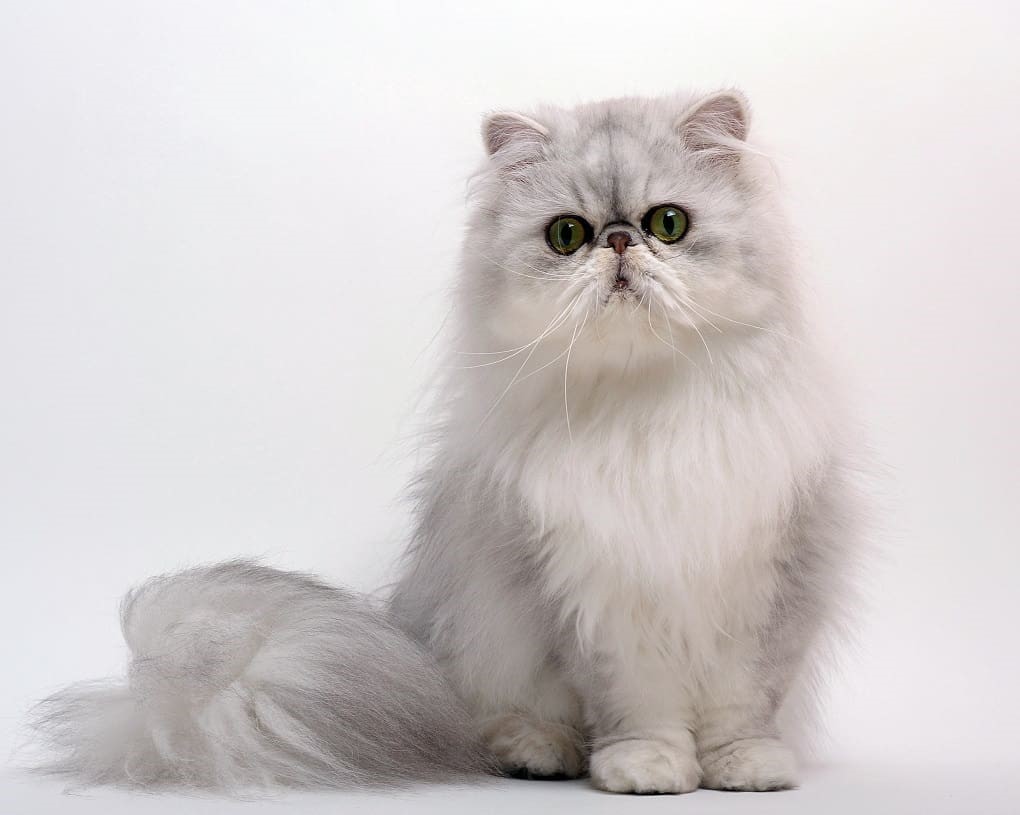
John K. Rosembert The Asian Semi-Longhair is a cat breed similar to the Asian Shorthair except they have semi-long hair instead of short hair. These cats are normally known by the name Tiffanie. They are recognized in any of the Asian Shorthair or Burmese colors and patterns. Like the Asian Shorthair, the breed was developed in Britain and is not currently recognized by any U.S. Registries. It has full recognition in the GCCF and although it is a relatively rare breed some fine examples have become champions. The Asian Semi-longhair is a very sociable and people-friendly cat. It is often referred to as being a dependent cat, as it absolutely hates being alone and does not want to be left on its own. It’s not a type of cat to get if you do not have ample time to play and socialize with it. The Asian Semi-longhair loves to meet new people and old friends alike, plus it does fine with kids and dogs. In fact, it is a type of cat that really enjoys playing with children. It is a very playful cat that has a lot of fun with yarn, string, and all toys alike. This is also a very curious and adventurous cat that loves exploring new places. It has a tendency to get into drawers and cupboards, and it always wants to find out what is behind closed doors. The Asian Semi-longhair is a fairly vocal cat, and they will definitely tell you when they are unhappy with their fairly loud voices. The Asian Semi-longhair tends to be a fairly healthy cat, although they have been known to develop some issues with age. Some common problems include heart, renal, and periodontal diseases, although these are not really breed specific. They do require regular deworming, and they need to have their vaccinations. That said, they are not overly prone to serious health conditions. Sources: Photo credit: https://kittywise.com/asian-semi-longhair/ https://cats.fandom.com/wiki/Asian_Semi-longhair https://kittywise.com/asian-semi-longhair/
Breed-related disease: Affenpinscher
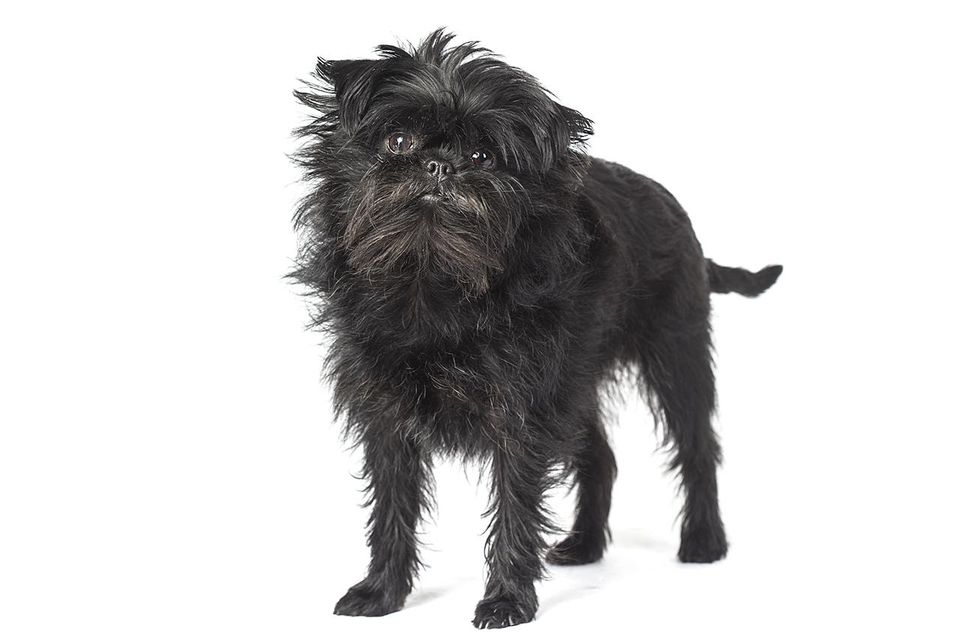
John K. Rosembert The Affenpinscher also known as the “monkey dogs,” could be described as cheeky little monkeys. That isn’t to say that they’re naughty but a comical little dog with bags of personality. He is a small, compact terrier-type dog with bushy eyebrows and a mischievous monkey-like expression. The coat is rough and of uneven length over the body adding to their somewhat comical appearance. They have a lively, strutting movement. He is one of the oldest breeds, known to have been in existence in the 17th century and similar dogs appear in paintings of the fifteenth and sixteenth centuries. The Affenpinscher adores his family and is fine with other family pets, especially when raised with them. In the home, he is an inquisitive busybody who must check out new sights and sounds. His playful antics are delightfully entertaining as he bats toys around with his agile paws. Affenpinschers do have a mind of their own, and without a firm hand can be obstinate and demanding, tossing tantrums or sulking when they don’t get their own way. It might make you laugh, but spoiling is not recommended for this breed, especially since he is so bright and does respond well to calm, patient training, like most terrier-type dogs, the Affenpinscher is proud and sensitive and does not take kindly to being teased. This breed is happiest in a home without young children. According to dog experts, Affenpinscher Dogs score 3 out of 5 in the scale of breeds that are considered the most healthy dog breeds. They are generally healthy, but like all breeds, they’re prone to certain health conditions. Not all Affens will get any or all of these diseases, but it’s important to be aware of them if you’re considering this breed. Patellar Luxation: Also known as “slipped stifles,” this is a common problem in small dogs. It is caused when the patella, which has three parts-the femur (thigh bone), patella (knee cap), and tibia (calf)–is not properly lined up. This causes lameness in the leg or an abnormal gait, sort of like a skip or a hop. Legg-Perthes Disease: Generally a disease of small breeds, this condition–a deformity of the ball of the hip joint–usually appears at 6 to 9 months of age and can be confused with hip dysplasia. It causes wearing and arthritis. It can be repaired surgically, and the prognosis is good with the help of rehabilitation therapy afterward. Hip Dysplasia: This is a heritable condition in which the thighbone doesn’t fit snugly into the hip joint. Some dogs show pain and lameness on one or both rear legs, but you may not notice any signs of discomfort in a dog with hip dysplasia. As the dog ages, arthritis can develop. Dogs with hip dysplasia should not be bred. If you’re buying a puppy, ask the breeder for proof that the parents have been tested for hip dysplasia and are free of problems. Heart Murmurs: Heart murmurs are caused by a disturbance in the blood flow through the chambers of the heart. They’re an indicator that there may be a disease or condition of the heart that will need to be monitored and treated. Sources: https://en.wikipedia.org/wiki/Affenpinscher https://dogtime.com/dog-breeds/affenpinscher#/slide/1 https://www.yourpurebredpuppy.com/reviews/affenpinschers.html Photo credit: https://www.thesprucepets.com/breed-profile-affenpinscher-1117931
Breed-related disease: British Shorthair Cat
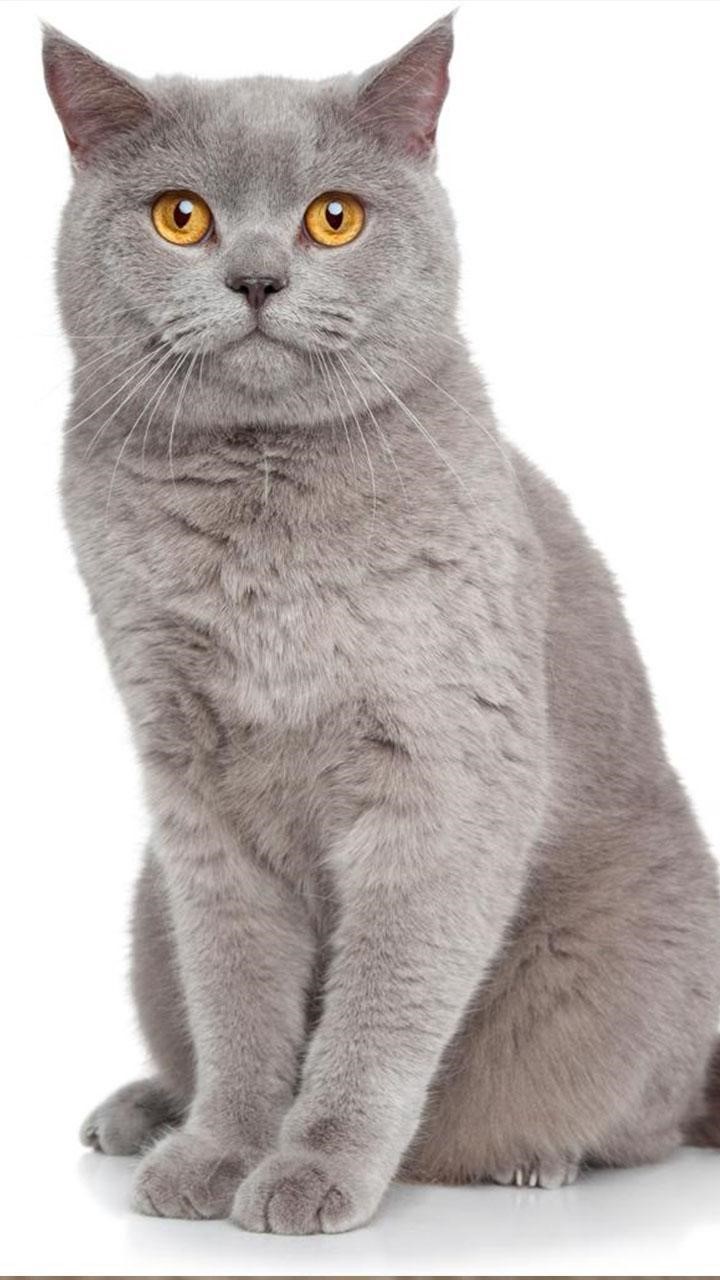
John K. Rosembert The British Shorthair is a dignified, intelligent and affectionate companion. They aren’t your general lapcat, but they tend to be always by your side on the sofa or at least nearby. Females tend to have a serious demeanor, while males are more happy -go-lucky. These laidback cats can get along well with dogs and are calm around children, but they don’t enjoy being hauled around. The British Shorthair is solid and muscular with an easygoing personality. As befits his British heritage, he is slightly reserved, but once he gets to know someone he’s quite affectionate. His short, dense coat comes in many colors and patterns and should be brushed two or three times a week to remove dead hair. British Shorthairs are generally a robust breed without too many problems. Because they have been bred with Persians in the past there is small chance of a being affected by: Polycystic kidney disease: a condition where cysts, present in the kidneys from birth, gradually increase in size until the kidney cannot function normally, resulting in kidney failure. A genetic test is available for this disease. Hypertrophic cardiomyopathy: a condition where the volume of blood that the heart pumps with each contraction is reduced. This can cause fainting, tiredness and other signs of heart disease. Sources: http://www.vetstreet.com/cats/british-shorthair#1_ugw20zmq http://aubreyamc.com/feline/british-shorthair/ Photo credit: https://www.pdsa.org.uk/taking-care-of-your-pet/looking-after-your-pet/kittens-cats/british-shorthair Photo credit: https://apkpure.com/tw/british-shorthair-cat-wallpaper-hd/com.autoinsurance.australia#com.autoinsurance.australia-1
Breed-related disease: Labrador Retriever
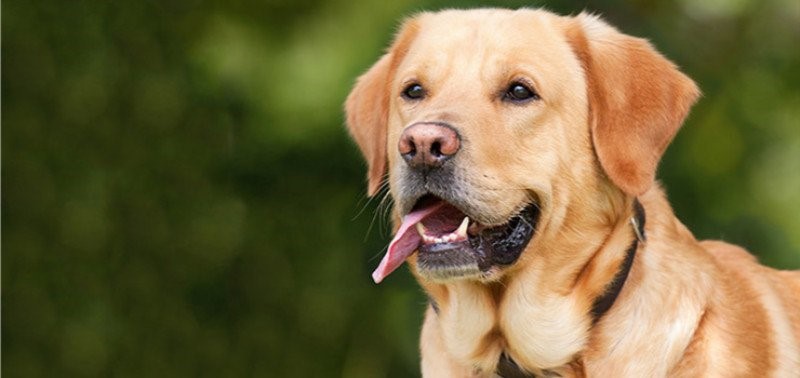
John K.Rosembert The Labrador Retriever (aka Labrador, or Lab for short) is one of several kinds of retriever, a type of gun dog. The Labrador Retriever is loyal, devoted, playful, and hardworking. He is patient with children and makes a wonderful companion and family dog. There are two types depending on which lab they were bred from: the English-bred Labs and the American-bred Labs. The English-bred Labs have a stockier, blockier, heavier and thicker build than the American-bred dogs. Both breeds have smooth double-coats without waves. The English labs also are more laid-back and they mature faster. Whatever their ancestry, Labs have a natural disposition to please and have fun, Although he barks protectively, due to his friendly nature, he is not suitable to be a guard dog, but he excels as a guide dog or assistance dog for the disabled, a search-and-rescue dog and a sniffer dog. If you are thinking of getting or got a Labrador Retriever, here are some of the most common health issues your Labrador might face: Joint Problems: Many Labs suffer from joint problems such as hip or elbow dysplasia, these conditions affect the hip or elbow joints, prohibiting normal movement and causing pain and immobility. Bloat and Obesity: Labradors are famously known for rapid eating which can also result in dangerous gastric distention. In dogs, this is also known as bloat which is a huge health problem in Labradors. Caudal myopathy: This condition, which can scare many Labradors Retriever owners, is also known as “limber tail syndrome” and is commonplace among the breed, but not exclusive to it. Myopathy in this area is characterized by a flaccid paralysis in the tail. Eye problems: Many Labradors suffer from eye problems, from minor ocular defects to cataracts or progressive retinal atrophy. These are hereditary diseases that impair the dog’s vision. Sources: Photo Credit: http://fishsubsidy.org/labrador-retriever/ https://www.dogzhealth.com/labrador-retriever-health-problems/ https://www.labradortraininghq.com/labrador-health-and-care/common-labrador-health-conditions/ https://labrador-central.com/labrador-health-issues/.
Breed-related disease: Persian Cat
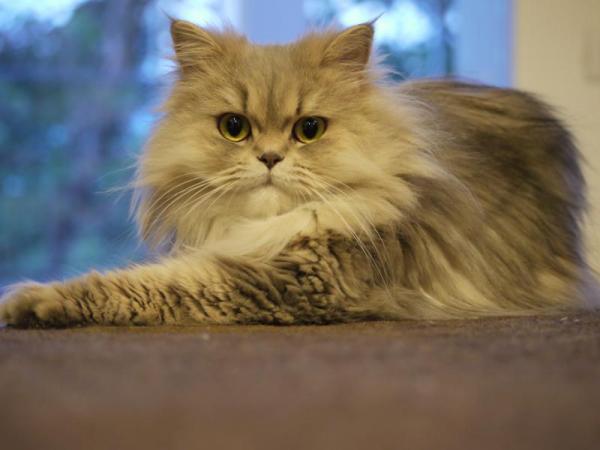
John K. Rosembert The Persian is the most popular pedigreed cat in North America, if not the world, it is also known as the “Persian Longhair” in the English-speaking countries. In the Middle East region, they are widely known as “Iranian cat” and in Iran they are known as “Shiraz cat”. The first documented ancestors of the Persian were imported into Italy from Iran around 1620. The Persian comes in two types: show and traditional. The show Persian has a round head enhanced with a thick ruff, small ears, a flat nose, big round copper eyes, a broad, short body with heavy boning atop short tree-trunk legs, and a thick, flowing plume of a tail. While the traditional Persian, also known as the Doll Face, does not have the extreme features of the show Persian, and his nose is a normal length, giving him a sweet expression. Both types have a long, glamorous coat that comes in many colors and patterns, and both share the same wonderful personality. Persian cats suffer from certain recurring problems. This does not mean that Persian cats are necessarily unhealthy, but you should be aware of their risks and needs in order to prevent diseases and notice them in time. Here are some of the most common diseases of Persian cats …. Hairballs and trichobezoars: Persian cats are known for their long and dense coat. Therefore, they are more likely to suffer from trichobezoars than other cats with shorter hair. Trichobezoars are hairballs that form in the cat’s stomach and digestive tract. Cats can usually regurgitate hairballs, but occasionally they accumulate in the stomach. When this happens, cats suffer badly and may even have serious health consequences. Polycystic kidney disease: Persian cats are very prone to polycystic kidney disease. This means that cysts develop in the kidney area, growing and multiplying if left untreated. It is estimated that 38% of Persian cats suffer from this hereditary disease. Respiratory problems: Persian cats are easily recognizable for their flat face and huge, round eyes. Sadly, having such a small nose causes the nasal passage to be very short and more sensitive to the cold, heat, moisture or dry environment. Heart problems: Fewer than 10% of older Persian cats have been found do have Hypertrophic cardiomyopathy which causes an enlargement of the left heart chamber and can result in sudden death. Eye problems: The special shape of a Persian cat’s eyes can also cause problems. The most common ocular diseases of Persian cats include: Congenital ankyloblepharon which is an inherited abnormality that usually occurs in blue-eyed Persian cats. Congenital epiphora consists of an excessive tearing of the tear duct, which results in oxidation of the hair around the eyes and infection by bacteria or fungi in the affected area Entropion is when the eyelashes rub and irritate the cat’s cornea as a result of the inversion of the eyelid edge Primary glaucoma Excessive blood pressure in the eye which results in opacity and vision loss. It should be treated by surgery. Sources: Photo credit: https://www.animalwised.com/common-diseases-of-persian-cats-738.html https://en.wikipedia.org/wiki/Persian_cat Persian https://www.animalwised.com/common-diseases-of-persian-cats-738.html
